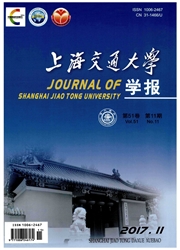

 中文摘要:
中文摘要:
介绍了一种新型凸轮转子连续回转电液伺服叶片马达的工作原理,推导了马达瞬时驱动转矩和瞬时转速的解析式,分析了过渡曲线的动态特性和力学特性,讨论了凸轮转子过渡曲线对提高马达性能的作用和设计准则,对二次等加速等减速、二次正弦和余弦及二次阿基米德等过渡曲线进行了理论推导与分析.结果表明,二次余弦曲线适用于作为三轴仿真转台所用凸轮转子叶片马达的过渡曲线,并有利于提高马达的性能.
 英文摘要:
英文摘要:
A novel continuous revolving electro-hydraulic servo cam-rotor vane motor was introduced with its operating principle. The analytic formulae of the motor's instantaneous torque and speed were derived. The effect of cam-rotor transition curves on improving the motor's performance and the design criterion were discussed from the aspects of motor's torque and speed fluctuation, and the dynamic and forcing characteristics of transition curves. The theoretical inference and characteristic analysis of four transition curves were conducted including secondary uniform acceleration-deceleration curve, secondary sine curve, secondary cosine curve and secondary Archimedes curve. Experimental results proved that the secondary cosine curve was suitable for the transition curve of the cam-rotor vane motor, which was used in three-ax- is motion simulator, and was also in favor of improving the performance of the motor.
 同期刊论文项目
同期刊论文项目
 同项目期刊论文
同项目期刊论文
 期刊信息
期刊信息
